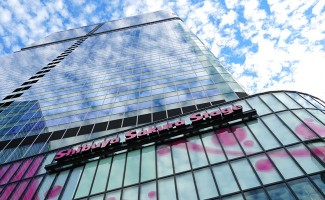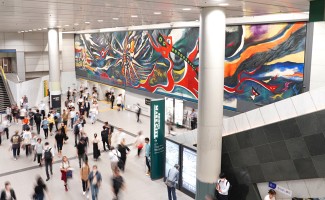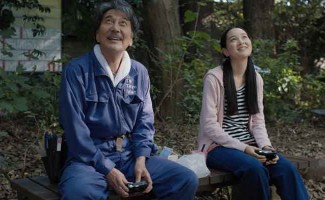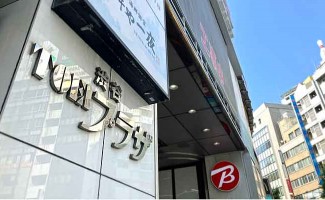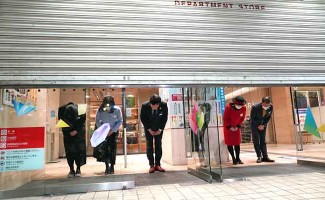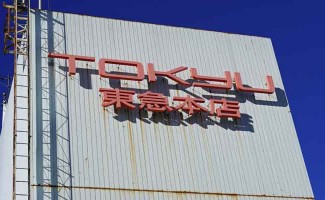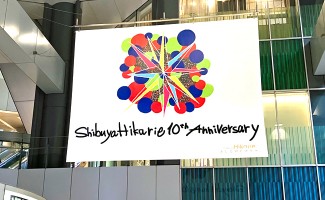Shibuya culture project
MENUKEYPERSON
「小さな個の集合知」で大きな仕事をする、これこそが「渋谷らしい働き方」だと思う。
co-lab企画運営代表/クリエイティブ・ディレクター田中陽明さん
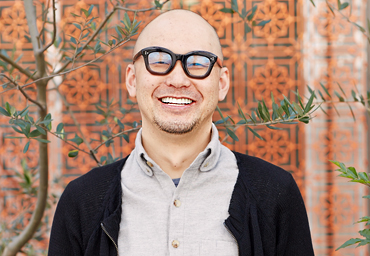 プロフィール
プロフィール
1970年 福井市生まれ。武蔵野美術大学建築学科を卒業後、大手ゼネコン設計部を経て、慶応義塾大学大学院 SFC 政策メディア研究科 (メディアアート専攻) 修了。2003年、クリエイター専用のシェアード・コラボレーション・スタジオ「六本木co-lab」をオープン。2005年、co-labを三番町に移転と共に「春蒔プロジェクト株式会社」を設立。その後、千駄ヶ谷(2010年)、西麻布(2010年)、二子玉川(2011年)、渋谷(2012年)、代官山(2015年)、墨田亀沢(2015年)と拠点を広げ、シェアオフィス事業を拡大。2017年5月には「co-lab渋谷アトリエ」を渋谷キャストに移転する予定。
2017年4月28日、明治通りとキャットストリートの合流地点に「渋谷キャスト」がオープンする。オフィスや飲食店、スーパー、ショップ、賃貸住宅、多目的スペース・広場などが入居する同複合施設は、「働く」から「暮らす」までの様々な機能を持ち,渋谷と原宿文化を結節する新たな情報発信地として注目されている。「クリエイターの拠点」を標榜する施設の中核を担うのは、シェアオフィス「co-lab渋谷キャスト」。開発構想時から参画するco-la代表の田中陽明さんは、開発フェーズにおける施設全体のコンセプトメイクやデザイン、開業後の施設運営にも深く関わるキーパーソンの一人。「渋谷キャストに小さな村をつくる」という田中さんは、14年間にわたるシェアオフィス事業の集大成として同プロジェクトを位置づけ、渋谷キャストで新しいコミュニティーづくりにチャレンジしていくという。co-lab発想の原点から渋谷キャスト開発に至るまで、田中さんにその想いをじっくりと語ってもらった。
SFCのコミュニティースペースがco-labの原点
_大学卒業後、大手ゼネコンに就職されていますが、3年で辞めていますね。
こんなことを言うと、元会社の人に怒られてしまうんですけど、始めから2、3年で辞めようと思っていました(笑)。僕は美大系の建築出身で、学生時代は社会性の全くない美大生たちと一緒に住み、思考回路が全部そっちだったんですよ。ところが建築の仕事って、すごく社会性が必要じゃないですか。お客さんがいて、家を建てるのも法律下で動いていたり、これは建築家としての根本的なところが不味いなと感じていて。だから、日本の縮図みたいなゼネコンに入って、自己矯正しようかなと考えたのです。
_就職を利用して自分を教育し直そうと

動機はかなり不純ですよね。デザインとか、大きな建物を建てたいとか、そういうことはなくて。でも、そのおかげで、大手企業の組織の仕組みや人間関係がどうかなど、サラリーマン社会を学ぶことが出来ました。もともと大学を卒業したら、海外の建築系の大学院に進みたいと思っていたのですが、ちょうどバブルが弾けて、それどころじゃなくなるぞと言われて。一旦、留学を中断して、就職を選んだというのが正直なところ(笑)。就職から3年を経て、いよいよ本格的に留学をしようと準備を始めていた時に、慶應大学大学院で研究員をしている知人から、SFCの政策・メディア研究科に誘われて。そこでは建築そのものというより、建築を通して社会をどう変えていくかとか、メディアやインターネット、コンピューターテクノロジーを使って、社会観念を考えていくことが学べるんじゃないかと思って。今までとフィールドが全く違ったのですが、またいつか建築に戻ってくればいいかなという感じで、進路を変更しました。
_大学院卒業後、co-labを開くまでの経緯を教えてください。
SFCの建物は、建築家・槇文彦さんが設計したものなんですが、他の分野の研究室間に仕切りなく、広い空間に点在していました。隣は人工知能の研究室とか、経済、政治の研究室、横で竹中平蔵さんが何かを教えていたりなど、そういうオープンスペースな環境の中で、いろんな会話が聞こえてくるんです。ヒアリング効果というのか、自然と隣のことに興味が湧いてきたり、何か共通言語みたいなのを持つようになり、その上でアートやデザインを考えていると、どんどん視野が広がっていくような感じがあったんです。卒業後、学生時代に自然にあったその環境がもう一度欲しいなと思っていたのですが、世の中を見渡してもどこにもなくて。じゃあ自分で作ってみようかなと。もともと建築をやっていたので空間は作れるし、大学でメディアアートを研究していたので、コミュニケーションをデザインすることにも興味があったので。じゃあそれをミックスする一つの作品として、クリエイターを集めて、そこでものづくりが出来るシェアオフィスのようなスペースを作ろうと。たまたま、それを森ビルの社長にプレゼンする機会を得て、運良く場所を御用意していただいたという…。
_co-lab六本木は長く運営していこうと考えていたわけではなく、期間限定のアート作品のような位置づけだったのでしょうか。

いつ終わるはあまり考えていなかったですね。ただ、口コミでかなり広がっていて、入居したいという人は結構多かったのですが、いろいろ事情があって、3年で閉じることに。その閉店のタイミングで「IDEE R-PROJECT」から声をかけてもらい、千代田区の三番町にうまく移ることが出来ました。三番町では7階建てのうちの4フロアを使っていたんですけど、そこに百何人もの人たちが集まるようになって。当時はArt Beatやgreenzとか、すごくエッジが効いた人たちが入居してくれて、何となく独自のコミュニティーがオーガナイズされていて、その状況はすごく楽しかったです。
_当時、そういう場は国内外に事例があったのですか?
海外には、もうちょっとビジネス化された「コワーキングスペース」の原型みたいなものがあったと思いますが、たぶんクリエイター専用はなかったでしょうね。当時、「日本でこういう場所を探していたんだ」という外国人利用者が結構いましたから。でも、そこも4年くらいで、定期借家の関係で閉じなきゃいけないということになって。入居者の規模がかなり大きくなり、僕自身もシェアオフィス運営と、デザイン系の仕事をやっていたのですが、シェアオフィスを経由してデザインの仕事を受けるケースも増えて、こういう二本柱の環境でやっていくことが大事なんだなと分かってきていて。そこで受け入れ先を探していたところ、コクヨさんや東急さんなどと出会って、一気にシェアオフィス事業が広がりました。今は渋谷や西麻布、二子玉川など6カ所で展開しています。2010年ぐらいから渋谷を中心に「コワーキングスペース」が増えてきましたが、そういう意味では2003年からやっている、僕らは「新しい働き方」の先駆けと言えるかもしれません。

明治通りとキャットストリート入口に接する立地にオープンした大型複合施設「渋谷キャスト」。渋谷と原宿文化を融合するクリエイターの新しい拠点として高い注目を集める。
僕らco-labは、小さな個が集まった「スイミー」
_宇田川・「渋谷アトリエ」をオープンされて、もう6年が経ちます。三番町から渋谷に引っ越してきたときには、新しくオープンする「渋谷キャスト」への入居を前提として、一時的な仮の住まいとして「渋谷アトリエ」を開いたのですか?
そうです。将来、「渋谷キャスト」への移転を視野に入れて、東急電鉄さん、東急建設さんの協力を得て、当時空きスペースだった宇田川町の物件一棟を貸してもらいました。「渋谷キャスト」はもともと都営宮下アパート跡地の再開発事業なのですが、「クリエイティブな施設にしなさい」というお題を東京都から受けて、東急電鉄さんなどの複数企業がコンペに参加して。そのときに東急さんから僕らに声を掛けてもらい、クリエイティブやコミュニティーづくりのコンセプトメイクや企画案づくりのお手伝いをしました。その後、実際にコンペが取れて、開発チームに参加させてもらったという経緯です。設計の核は日本設計さんが担当していますが、僕らはco-labメンバーを中心に建築家やデザイナー、コンセプターを含めたチームを編成して、デザインディレクションや商品企画などに関わらせてもらいました。日ごろ、僕はco-labを「集合知のデザイン」と言っているんですけど、今回の仕事はチームを組んでやっていくという、co-labのコラボレーション型の仕事の集大成と言えます。今までにもプロダクトとか、小さなコラボレーション事例はかなり数があるんですけど、これだけの巨大開発でコラボレーションをやったのは初めて。まさに集合知の大実験で、僕らにとってはいい事例ができたかなと思っています。
_では、具体的に「渋谷キャスト」について聞いていきたいのですが、まず建物のデザインや外観などでこだわった点はありますか?

角度の異なる3つのルーバーが壁面を被いユニークなファサードを形成している。

明治通り側の広場下から壁面を見上げると 太陽に照らされるルーパーの反射がそれぞれ異なるのがよく分かる。
建物は西日対策などを考慮して、窓面を東側にしています。そうすると、明治通りに面したファサード側に、本来は建物の裏側に隠しておくべき、機械室がむき出しになってしまいます。その壁面をどう隠すか、デザインするかが、実はすごく重大なテーマだったのです。僕らは、その課題に対して建築事務所noiz(ノイズ)の豊田啓介さんが得意とする「アルゴリズムデザイン」を取り入れ、ルーバーという壁面に立つフィンの角度を3つ組み合わせながら、ファサードをデザインしました。一つ一つのフィンは不揃いなんだけど、全体としては一つの魚群のような動きのあるデザインで構成されているでしょう。僕自身は、ファザードを大きなキャンバスに見立て、そこに「スイミーの絵」が描かれていると思っているんです。フィンの角度の違いから歩きながら見ると、どんどん絵が変わり、西日の太陽の動きに合わせて反射も変わっていく。デジタルサイネージではないですけど、アナログな絵が動く、ムービングする壁面となっています。今回の案件はco-labチームにとって大きなコラボレーションで、「小さい個の集まりで集団」という「スイミー」のストーリーとも重なる部分があり、僕としてはあのファサードにその思いが反映されていると感じています。若手の建築家が、これだけ大きな開発には関われないですから。それがco-labの集合体が核になることで、フリーランスに近い若手のクリエイターたちにチャンスを与えられるという。まさに「渋谷らしい働き方」と言えるのではないでしょうか。
_「渋谷らしい」というキーワードが出てきましたが、立地はどうですか? ちょうど渋谷と原宿の間になりますが。
すごくいいですね。今いる宇田川町は、パルコや西武などの色が付いていて、「ザ・渋谷」じゃないですか。渋谷キャストがオープンする場所は、表参道、原宿方面に伸びるラインの延長上にあって、ハイソではないですけど、洗練された雰囲気も感じる。単なるサブカルではなくて、もうちょっとビジネス寄りの話をしてもおかしくないエリアだと思う。目の前にはキャットストリートもあって、すごくバランスがいいなと。宇田川町などの「ザ・渋谷」とは異なる、次世代の「渋谷の新しいまち」の形を、渋谷キャストから創れるんじゃないかと思っています。

交通量の多い明治通りとは異なり、渋谷キャストから表参道方面に続くキャットストリートには、歩行速度を緩めて買い物を楽しむ人や、仲間と憩う若者たちの姿も見られる。
Recommended articles
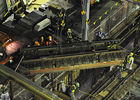
Standing at the moment of Shibuya in The construction work is reborn ...
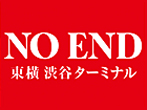
85年の東横ターミナルデパート物語
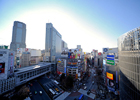
The Reason that Shibuya is Attractive to IT Startup Companies
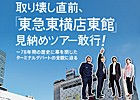
Demolition just before, "Tokyu Toyoko shops East Building" last look Tsu ...
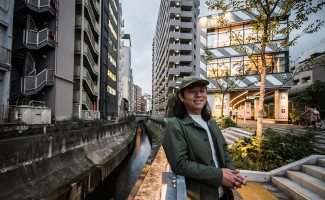
「渋南エリアはブルックリンやミッション」…
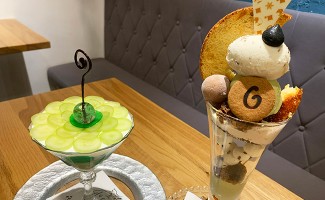
夜しか食べられないフォトジェニックなパフ…
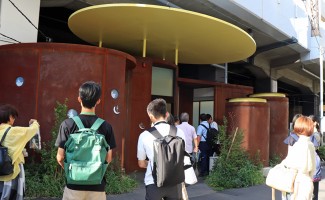
“公共トイレ”の見方が変わる!? 「TH…

The violinist Ikuko Kawai is in Shibuya...


